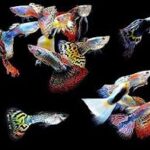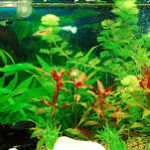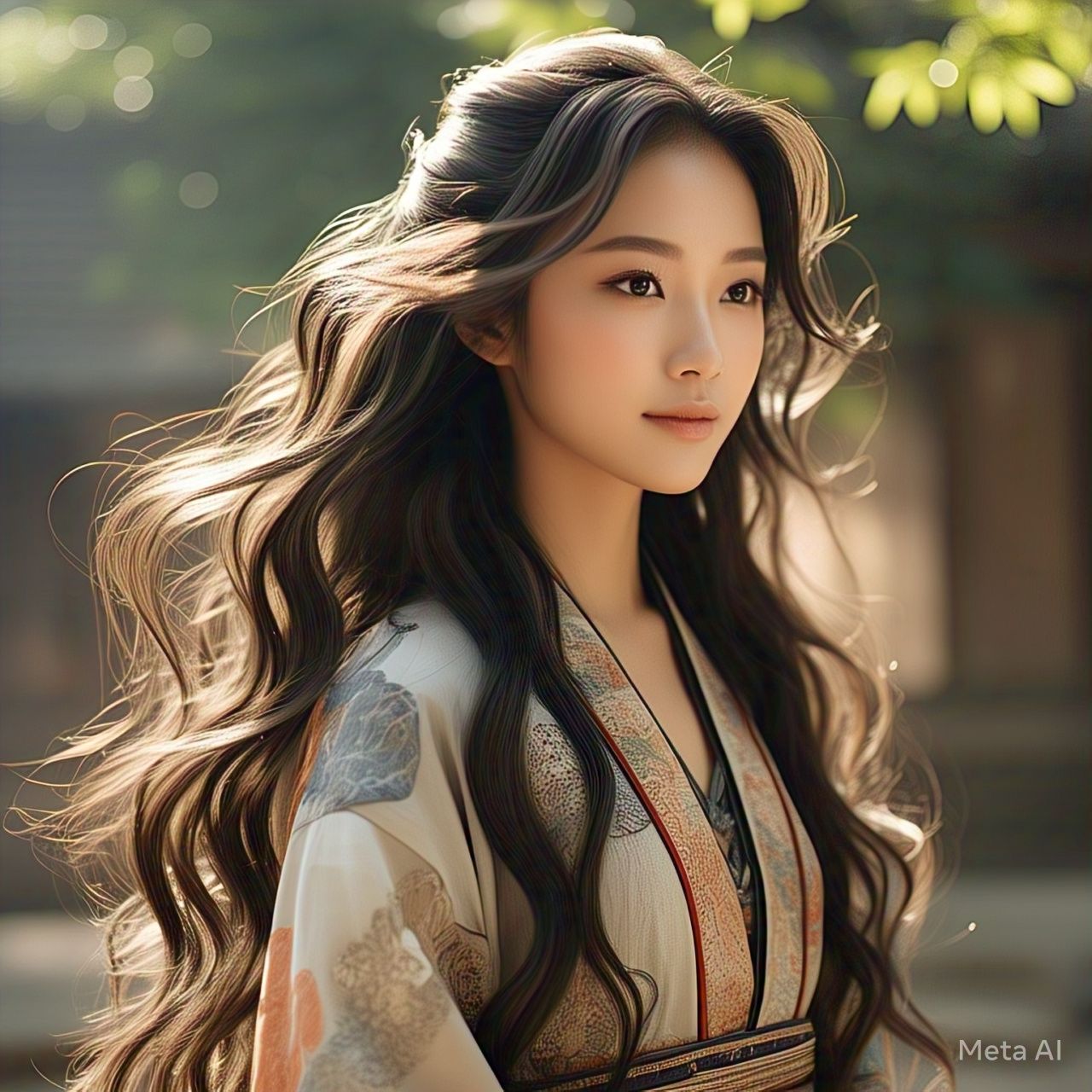The Unique Characteristics of Asian Hair
Asian hair has long been admired for its thickness, shine, and seemingly effortless growth. From the silky strands of Japanese women to the voluminous manes of Korean celebrities, Asian hair stands out for its unique texture and resilience. But what exactly makes it so different from other hair types? This article explores the biological and cultural factors that contribute to the legendary status of Asian hair, breaking down its structure, growth patterns, and the secrets behind its enviable appearance.
The Science Behind Asian Hair Structure
One of the most defining features of Asian hair is its structure. Scientifically, Asian hair tends to have a thicker diameter compared to Caucasian or African hair. Each strand is rounder and more densely packed with cuticles, which contributes to its strength and resistance to breakage. The cuticles lie flat, creating a smooth surface that reflects light, giving Asian hair its characteristic shine.
Another key difference is the density of hair follicles. Studies have shown that people of Asian descent often have a higher number of hair follicles per square centimeter, leading to a fuller appearance. This density, combined with the hair’s natural thickness, makes it less prone to thinning and more capable of retaining length over time.
Growth Patterns and Longevity
Asian hair is known for its impressive growth cycles. On average, hair grows about half an inch per month, but Asian hair often grows faster due to genetic factors. Additionally, the anagen (growth) phase of Asian hair tends to last longer than in other ethnicities, meaning the hair remains in the active growth stage for an extended period before shedding. This prolonged growth cycle allows many Asians to achieve waist-length or even hip-length hair with proper care.
Another contributing factor is scalp health. Asian hair follicles are deeply rooted, and the scalp produces a balanced amount of sebum—enough to keep hair moisturized without becoming excessively oily. This natural balance helps maintain hair strength and reduces issues like dryness or excessive greasiness, which can hinder growth in other hair types.
Cultural Influences on Hair Care Practices
Beyond biology, cultural practices play a significant role in the health and beauty of Asian hair. Traditional remedies, such as rice water rinses and herbal treatments, have been used for centuries to enhance shine and strength. In countries like China and Japan, haircare is often seen as an extension of skincare, with an emphasis on gentle cleansing, hydration, and protection from environmental damage.
Modern Asian haircare routines also prioritize minimal heat styling and chemical treatments, preserving the hair’s natural integrity. Many Asian women opt for protective hairstyles, like loose braids or buns, to prevent mechanical damage. This combination of ancient wisdom and modern discipline contributes to the enduring allure of Asian hair.
Asian hair’s legendary status is rooted in both genetics and cultural care. Its thick, smooth structure, extended growth cycles, and time-tested maintenance practices make it one of the most resilient and lustrous hair types in the world. The next section will delve deeper into the historical significance of long hair in Asian cultures and how these traditions continue to influence haircare today.
The Historical and Cultural Significance of Long Hair in Asia
The Symbolism of Long Hair in Ancient Traditions
Throughout history, long hair has held deep cultural and spiritual significance in many Asian societies. In ancient China, hair was considered a precious part of the body, influenced by Confucian beliefs that taught, “Our bodies, to every hair and bit of skin, are received from our parents.” Cutting one’s hair was often seen as an act of disrespect toward ancestors, which is why many men and women kept their hair long as a sign of filial piety.
Similarly, in Japan, the samurai class viewed long hair as a symbol of honor and status. The traditional “chonmage” hairstyle, where the top of the head was shaved and the remaining hair tied into a topknot, was not only practical for wearing helmets but also represented a warrior’s discipline and loyalty. For women, long, flowing hair was associated with beauty and femininity, often depicted in classical art and literature.
Hair in Mythology and Folklore
Asian mythology further reinforces the reverence for long hair. In Hindu traditions, the goddess Lakshmi is often depicted with thick, cascading locks symbolizing prosperity and fertility. Meanwhile, Chinese legends speak of supernatural beings, like the “Jiangshi” (hopping vampires), whose power was believed to be stored in their long hair.
Korean folklore also highlights the importance of hair, with stories of “gisaeng” (courtesans) who used their luxurious hair as a tool of seduction and elegance. These tales illustrate how hair was more than just a physical trait—it was a marker of identity, power, and even mystical energy.
Modern Interpretations and Trends
While modern lifestyles have made shorter hairstyles more common, the cultural admiration for long, healthy hair persists. K-pop idols and Asian actresses often showcase glossy, waist-length hair, reinforcing contemporary beauty standards. Many Asian haircare brands emphasize products that promote growth and shine, blending traditional ingredients like ginseng and camellia oil with modern science.
Social media has also played a role in popularizing Asian haircare techniques worldwide. Trends like the “10-step Korean hair routine” or Japanese “toning treatments” have gained global followings, proving that the legacy of Asian hair care continues to evolve while staying true to its roots.
The historical and cultural reverence for long hair in Asia has shaped modern beauty ideals and haircare practices. From ancient traditions to today’s global trends, Asian hair remains a symbol of strength, elegance, and timeless appeal. The next section will explore the best care practices that keep Asian hair so healthy and lustrous.
The Best Care Practices for Maintaining Healthy Asian Hair
Achieving and maintaining the long, silky hair often associated with Asian beauty standards doesn’t happen by chance—it requires a dedicated and well-informed haircare routine. While genetics play a significant role, the right care practices ensure that hair remains strong, shiny, and resistant to damage. This section explores the most effective methods for nurturing Asian hair, from traditional remedies to modern innovations, and provides actionable tips for maintaining its legendary appeal.
Understanding the Needs of Asian Hair
Before diving into specific routines, it’s essential to recognize the unique needs of Asian hair. Due to its thicker cuticle structure and higher density, this hair type tends to be more resilient but also heavier, which can lead to scalp tension if not properly managed. Additionally, while Asian hair is less prone to dryness than some other hair types, it can still suffer from issues like heat damage, split ends, and environmental stress.
A well-balanced approach—focusing on hydration, protection, and gentle handling—helps maintain optimal hair health. Over-washing, excessive heat styling, and harsh chemical treatments are common pitfalls that can undermine even the strongest strands.
Traditional Asian Haircare Secrets
For centuries, Asian cultures have relied on natural ingredients to enhance hair’s strength and shine. Many of these time-tested remedies are now backed by science and incorporated into modern products.
Rice Water Rinses
One of the most famous traditional treatments is rice water, which has been used in China and Japan for generations. Fermented rice water contains amino acids, vitamins B and E, and minerals that strengthen hair, reduce breakage, and add shine. Many women soak their hair in rice water once a week as a natural conditioning treatment.
Herbal Infusions
Ingredients like ginseng, green tea, and goji berries are commonly used in Asian haircare for their stimulating and antioxidant properties. Ginseng, in particular, is believed to improve scalp circulation, promoting healthier hair growth. Herbal rinses made from boiled herbs are sometimes used as a final wash to add luster and vitality.
Camellia Oil
Known as “tsubaki oil” in Japan, camellia oil has been a staple in haircare for its lightweight moisturizing properties. Rich in oleic acid, it penetrates the hair shaft without leaving a greasy residue, making it ideal for smoothing frizz and preventing split ends.
Modern Haircare Routines for Optimal Health
While traditional methods remain popular, modern Asian haircare routines combine these ancient secrets with advanced cosmetic science. A typical routine might include the following steps:
1. Gentle Cleansing
Unlike Western routines that often emphasize daily shampooing, many Asian haircare experts recommend washing hair only two to three times a week. Sulfate-free shampoos are preferred, as they cleanse without stripping natural oils. Double cleansing—first with an oil-based cleanser to remove buildup, followed by a mild shampoo—is also gaining popularity.
2. Intensive Conditioning
Conditioning is non-negotiable for maintaining moisture. Many Asian haircare brands offer deep conditioning masks with ingredients like hyaluronic acid, ceramides, and hydrolyzed proteins to repair and hydrate. Leave-in conditioners and hair serums are also widely used to seal in moisture and add shine.
3. Scalp Care
A healthy scalp is the foundation of strong hair. Scalp massages, either with fingers or specialized tools, stimulate blood flow and encourage hair growth. Exfoliating scalp treatments, often containing charcoal or tea tree oil, help prevent clogged follicles and dandruff.
4. Heat and Chemical Protection
While styling is part of many routines, protecting hair from damage is crucial. Heat protectant sprays are applied before blow-drying or using hot tools, and low-heat settings are preferred. Many Asian women also limit chemical treatments like perms and dyes, opting instead for semi-permanent gloss treatments that enhance shine without harsh damage.
Lifestyle Factors That Influence Hair Health
Beyond topical treatments, overall lifestyle choices play a significant role in hair quality.
Diet and Nutrition
A diet rich in protein, omega-3 fatty acids, and vitamins (particularly biotin and vitamin E) supports hair strength and growth. Traditional Asian diets, which include foods like fish, seaweed, eggs, and nuts, naturally provide many of these nutrients.
Hydration and Sleep
Staying hydrated ensures that hair remains supple, while adequate sleep reduces stress-related hair loss. Many Asian beauty advocates emphasize the importance of rest and stress management for maintaining thick, healthy hair.
Common Mistakes to Avoid
Even with the best intentions, some habits can sabotage hair health.
- Over-brushing: While brushing distributes natural oils, excessive brushing can cause mechanical damage. Wide-tooth combs or boar bristle brushes are gentler alternatives.
- Tight Hairstyles: Constant tension from tight ponytails or braids can lead to traction alopecia. Loose styles and silk scrunchies help minimize breakage.
- Skipping Regular Trims: Even with excellent care, split ends can travel up the hair shaft. Regular trims (every 8-12 weeks) prevent further damage.
The secret to Asian hair’s legendary beauty lies in a combination of ancestral wisdom and modern science. By adopting gentle cleansing habits, incorporating nourishing treatments, and protecting hair from environmental stressors, anyone can achieve stronger, shinier locks. The final section will debunk common myths about Asian hair and explore how global beauty standards continue to evolve.
Debunking Myths and the Global Influence of Asian Haircare
Asian hair has long been shrouded in both admiration and misconceptions. While its thickness and shine are widely celebrated, several myths persist about its maintenance, growth potential, and styling limitations. At the same time, Asian haircare philosophies have gained global recognition, influencing beauty standards and routines worldwide. This final section separates fact from fiction, examines the science behind common beliefs, and explores how Asian haircare has become a benchmark for healthy hair across cultures.
Myth #1: Asian Hair Grows Faster Than Other Hair Types
One of the most pervasive myths is that Asian hair grows at an accelerated rate compared to other ethnicities. While it often appears longer and thicker, the actual growth speed is similar—averaging about half an inch per month. The difference lies in the hair’s growth cycle and retention.
Asian hair typically has a longer anagen (growth) phase, meaning it spends more time actively growing before entering the resting (telogen) phase. Additionally, because the strands are thicker and more resistant to breakage, less hair is lost daily, creating the illusion of faster growth. Proper care—minimizing heat damage, avoiding excessive brushing when wet, and maintaining scalp health—further enhances length retention.
Myth #2: Asian Hair Doesn’t Get Frizzy or Dry
Another common assumption is that Asian hair is immune to frizz and dryness due to its smooth texture. While the tightly packed cuticles do repel humidity better than some hair types, environmental factors, chemical treatments, and improper care can still lead to:
- Frizz: Humidity, hard water, and sulfates in shampoos can lift cuticles, causing flyaways.
- Dryness: Over-washing, heat styling, and lack of moisture can dehydrate even the most resilient strands.
Many Asian haircare routines combat this with hydrating tonics (like hyaluronic acid sprays) and oil-based serums (such as argan or camellia oil) to lock in moisture without weighing hair down.
Myth #3: Asian Hair Can’t Hold a Curl
A frequent complaint is that Asian hair is “too straight” to maintain curls. While the hair’s density and round follicle shape make it naturally straighter, it can hold curls—with the right techniques:
- Prepping the Hair: Using a volumizing mousse or texturizing spray before curling adds grip.
- Heat and Hold: Curling at a higher temperature (around 350°F) and allowing curls to cool before brushing helps them set.
- Strong-hold Products: Light hairsprays or sugar-based sprays provide lasting hold without stiffness.
Korean and Japanese beauty trends have popularized digital perms, which use heat and chemicals to create long-lasting, natural-looking waves—proof that Asian hair can indeed embrace texture.
The Global Rise of Asian Haircare Trends
From 10-step routines to innovative ingredients, Asian beauty philosophies have reshaped global haircare. Key influences include:
The Korean Glass Hair Trend
This ultra-glossy, smooth style mimics the reflective shine of glass. Achieved through:
- Deep conditioning masks with ceramides
- Scalp exfoliation to remove buildup
- Heat protectants for high-shine blowouts
Western brands have since launched similar “hair gloss” treatments, proving the trend’s worldwide appeal.
Japanese Hair Perfectionism
Japanese haircare emphasizes precision and maintenance, with treatments like:
- Toning baths to neutralize brassiness
- Fringe revival services for perfect bangs
- Cold-air styling to minimize heat damage
Salons in major cities now offer these specialized services, catering to clients seeking Asian-inspired care.
Chinese Herbal Innovations
Ancient ingredients like ginseng, goji berry, and black sesame are now featured in global products for their purported growth-boosting effects. Studies suggest these herbs may improve circulation and nutrient delivery to follicles.
The Future of Asian Haircare
As beauty becomes more inclusive, Asian haircare is adapting to diverse needs:
- Expanded texture offerings: Products for wavy or curly Asian hair are emerging.
- Sustainable packaging: Refillable bottles and biodegradable masks align with eco-conscious values.
- Customized tech: AI-powered scalp analyzers and DNA-based hair tests tailor routines to individual genetics.
Asian hair’s legendary status stems from both biological advantages and centuries of meticulous care. By debunking myths and embracing science-backed practices, it’s clear that its appeal lies not in unattainable perfection, but in adaptable, holistic care. As global beauty standards evolve, Asian haircare remains at the forefront—proving that healthy, luminous hair is a universal aspiration.
Whether through rice water rinses or high-tech serums, the secrets of Asian hair continue to inspire, offering lessons in patience, prevention, and the power of tradition meeting innovation.










